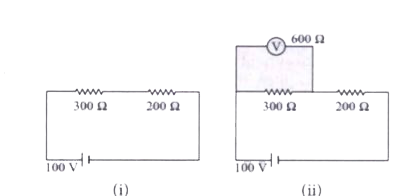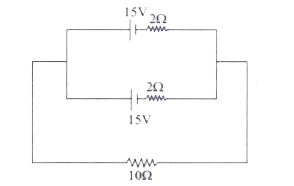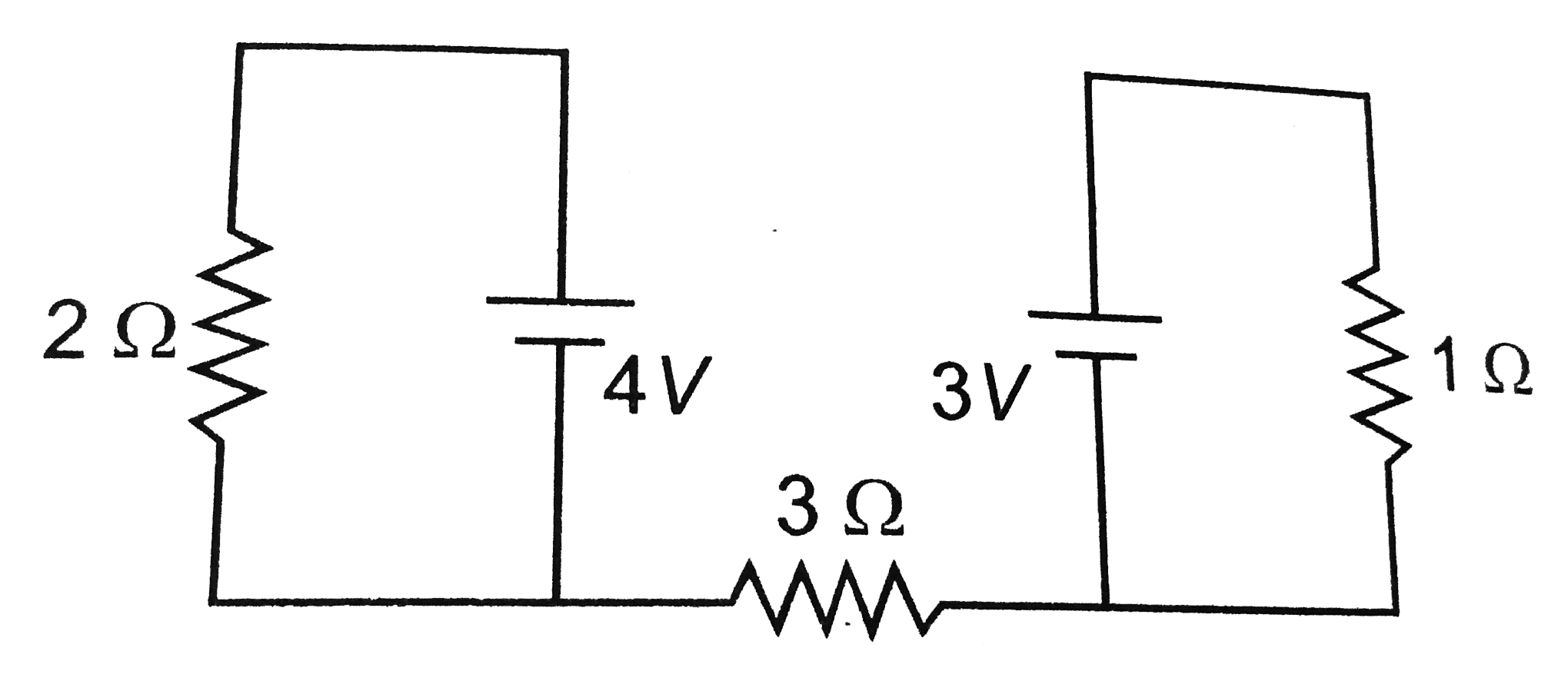Two electric current I and II are shown in figure. 

In which circuit, the potential difference across each resistor is equal.
Potential difference across each resistor is equal in circuit II.
Topper's Solved these Questions
- ELECTRICITYBOOK - SURA PUBLICATIONCHAPTER - ELECTRICITYEXERCISE - ADDITIONAL QUESTIONS & ANSWRES (Value Based Question)
1 Videos
- ELECTRICITYBOOK - SURA PUBLICATIONCHAPTER - ELECTRICITYEXERCISE - ADDITIONAL QUESTIONS & ANSWRES (Numerical Problems)
8 Videos
- ACOUSTICSBOOK - SURA PUBLICATIONCHAPTER - ACOUSTICSEXERCISE - ADDITIONAL QUESTIONS & ANSWERS (VALUE B ASED QUESTION)
2 Videos
- HALF YEARLY MODEL QUESTION PAPERBOOK - SURA PUBLICATIONCHAPTER - HALF YEARLY MODEL QUESTION PAPEREXERCISE - MCQ.s
24 Videos
Similar Questions
Knowledge Check
What is the potential difference across resistor in the given circuit ?
 A80VB0VC32VD16V
A80VB0VC32VD16VIn the circuit shown below:

The potential difference across the 3Ω resistor is:A19VB12VC1VD2VIn the circuit shown in the figure, the potential difference across the 4.5μF capacitor is
 A83voltsB4 voltsC6 voltsD8 volts
A83voltsB4 voltsC6 voltsD8 volts
In the circuit shown in figure potential difference across

View SolutionName an instrument that measures potential difference between two points in a circuit.
Difine the unit of potential difference in terms of SI unit of charge and work . Draw the
circuit symbols for a (i) veribale resisitor , (ii) a plug key which is closed one .
Two electric circutirs I and II are shown below.
(i) Which of the two circuits has more resistance?
(ii) Through which circuit more current passes?
(iii) In which circuit, the potential difference across each resistor is equal?
(iv) If R1>R2>R3, in which circuit more heat will be produced in R1 as compared to
other two resistors?
 .
.
View SolutionName an instrument that measures potential difference between two points in a circuit.
Difine the unit of potential difference in terms of SI unit of charge and work . Draw the
circuit symbols for a (i) veribale resisitor , (ii) a plug key which is closed one .
Two electric circutirs I and II are shown below.
(i) Which of the two circuits has more resistance?
(ii) Through which circuit more current passes?
(iii) In which circuit, the potential difference across each resistor is equal?
(iv) If R1>R2>R3, in which circuit more heat will be produced in R1 as compared to
other two resistors?
 .
.
View SolutionFind the potential drops across the two resistors shown in figure.

View SolutionFor the circuit shown in the figure what is the potential difference across the external resistance ?

View Solution

